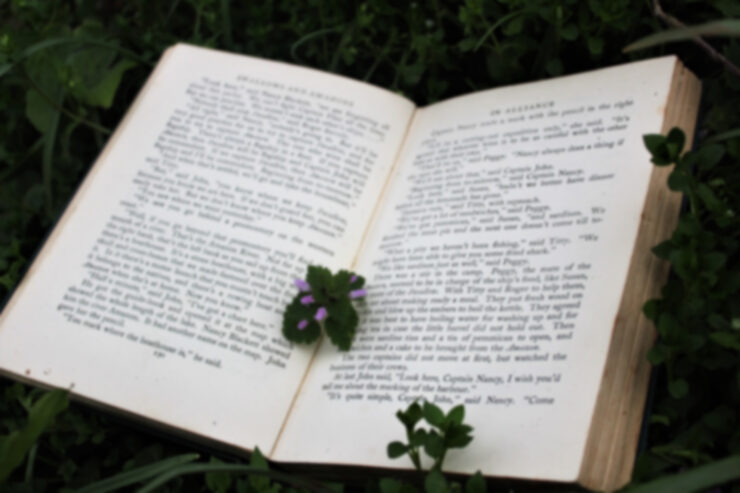I recently wrote an article about my favorite fungi stories and now it’s time for the companion piece about sentient (and often sinister) plants. It’s a common misconception that fungi are plants, but they’re biologically very different. While plants make their own nutrients via photosynthesis, fungi decompose matter in order to survive. And although fungi might look like they belong to the vegetable category, on a molecular level they’re actually more closely related to the animal kingdom.
But don’t be fooled into thinking that plants are any less creepy than mushrooms just because they like sunshine and share less DNA with us! For instance, a recent study found that plants emit ultrasonic screams when they’re underwatered or cut. With that unsettling thought in mind, let’s dive into seven stories (that are thankfully fictional… at least for now) about scary plants.
The Ruins by Scott Smith
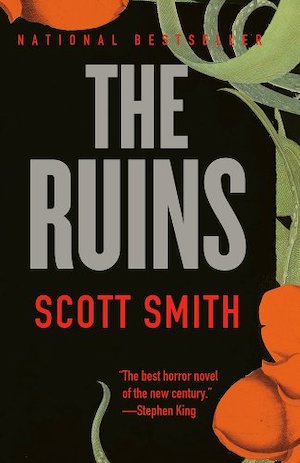
Survival horror tends to lend itself to exhilarating plots that barrel forward without pausing for breath and The Ruins (2006) definitely fits that bill. There are no chapters; instead, the book is presented as one continuous narrative which makes the horror feel relentless. There are small breaks when the POV shifts between characters, but I found myself desperate to read on, while simultaneously being repulsed by the gore.
The story follows a group of ill-prepared (and, honestly, idiotic) young adults who wander into the Mexican jungle looking for a good time (under the guise of searching for a missing person) but instead find a very, very bad time. Local villagers use force to trap them on a large hill surrounded by bare earth, and they’ve only got limited food and water. But both of these problems pale in comparison to the danger posed by the vines that cover the hill, which might just have a taste for human meat.
The Ruins has fun horror vibes, rather than psychologically traumatizing ones—think Cabin Fever (2002), rather than Hereditary (2018). If you prefer to experience this kind of horror onscreen, then a movie adaptation (which changes things around, so there will still be surprises even if you’ve read the novel) was released in 2008, but Smith’s descriptions in the book manage to be even more gruesome than the onscreen visuals.
Semiosis by Sue Burke
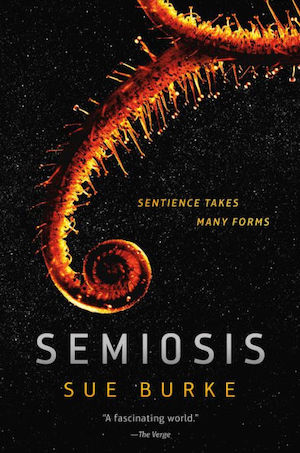
First contact narratives usually offer up humanoid or animal-like alien life forms, but Sue Burke takes the road less traveled in Semiosis (2018) by imagining a planet where the flora is more intelligent than the fauna. A small group of intrepid and idealistic explorers have left a failing Earth in the hope of establishing humanity on a new planet. They make an unexpected landing on a world they name Pax and quickly realize that the plants of this planet are considerably more advanced than on Earth.
The narrative unfolds over the course of many years and generations. Building a new society is challenging (and in this case requires a trigger warning for rape and violence) even without the intelligent plants, but interspecies communication and cohabitation adds another layer of complexity. Things are definitely a bit more sinister than, say, Merry and Pippin’s wholesome friendship with Treebeard in The Lord of the Rings.
If you’d like to read an excerpt, then the start of the novel can be read right here on Tordotcom. There are also two short stories that are set within the time period of Semiosis: “Cinderella Faraway” and “Spiders.” A sequel called Interference followed in 2019 and Usurpation, the third novel in the trilogy, is coming in 2024.
“The Seed from the Sepulchre” by Clark Ashton Smith
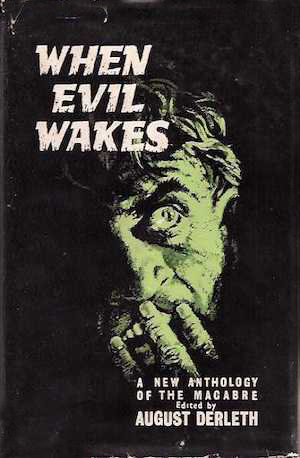
First published in 1933 in Weird Tales, “The Seed from the Sepulchre” is a short and sharp tale about an ill-fated adventure undertaken by two rare orchid hunters. Along with two guides, James Falmer and Roderick Thon are following the course of the Orinoco River in South America, but they’ve heard rumors of a ruined burial pit that is home to vast treasures and decide to see if the legend is true. Thon becomes ill on the journey and has to stop to rest, but Falmer ventures onward. He finds the tomb, but instead of gold he comes across a strange plant that has threaded its roots around the bones of the residents. What follows is some delightfully disgusting Cronenberg-level body horror…
The Day of the Triffids by John Wyndham
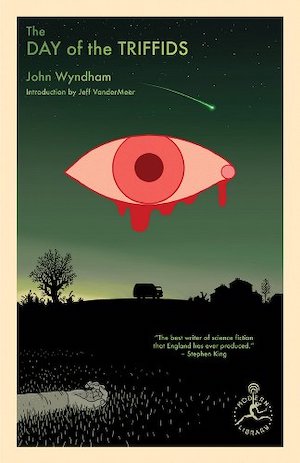
John Wyndham understood that it wouldn’t take much for society as we know it to unravel and he demonstrates this terrifying truth in The Day of the Triffids (1951). One day a strange new plant appears; it is tall, venomous, and can uproot itself to move around. Oh, and it’s carnivorous. Think Audrey II from Little Shop of Horrors but with a little less conversation and a little more locomotion. Despite their obscure origins and hunger for meat, humans think they can control the triffids and decide to milk them for all they’re worth, which in this case means harvesting the valuable oil they produce.
Then a beautiful meteorite shower blinds the vast majority of the population and suddenly humans aren’t at the top of the food chain anymore. Like many post-apocalyptic stories, The Day of the Triffids also dives into the idea that humans are the real monsters, offering social commentary on one hand and exciting action on the other. The story has been adapted many times, but honestly none of the versions I’ve seen outdo the original novel.
The Book of Koli by M. R. Carey
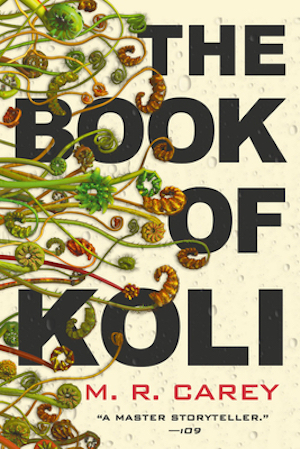
The Book of Koli (2020) is the first installment in M. R. Carey’s Rampart Trilogy, which is set in a far future where genetically altered plants have grown out of control and are now viciously aggressive towards humans. There are only a few pockets of civilization left, and the few pieces of technology that have survived the plant-pocalypse are treated as highly-prized magical objects.
Protagonist Koli lives in a small and relatively safe community called Mythen Rood, but if Twin Peaks has taught us anything, it’s that small towns often hide big secrets. When Koli starts to realize that not all is as it seems in Mythen Rood, he’s cast out into the deadly wilderness and left to fend for himself.
Carey’s novel is set many years in the future and the language used deviates slightly from standard English so it can take a little while to get used to. For instance, Koli says that he lives in Ingland (England), but that it also used to go by Briton (Britain), Yewkay (UK), and Albion (he gets the spelling right with that one). As well as spelling variations, his conjugation and grammar can also be clunky and odd at times, but it’s well worth adjusting to the language drift in order to explore the incredibly rich world of bizarre botanicals that Carey has created.
“Weeds” by Stephen King
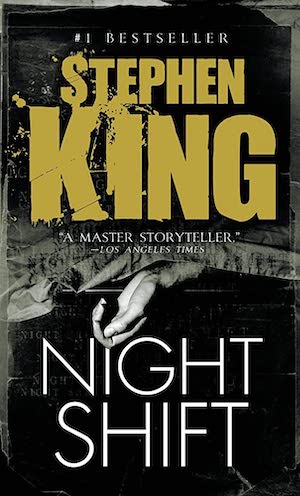
The short story “Weeds” is probably better known in its adapted form as a segment in George A. Romero’s anthology movie Creepshow (1982), titled “The Lonesome Death of Jordy Verrill.” Stephen King served as the film’s screenwriter and based two of the segments on his own short stories. Best of all, King himself stars as the hilariously dim-witted Jordy. His son, future horror writer Joe Hill, also got the chance to act in Creepshow, playing the horror-loving young boy in the prologue and epilogue.
Jordy isn’t the brightest and he’s clearly never read H. P. Lovecraft’s “The Colour Out of Space,” because when a meteorite lands on his farm he decides to touch it. First he gives it a kick with his boot (which isn’t so bad) but then it splits open and he pokes the weird contents with his fingers (which turns out to be a very bad move).
The original story was published in 1976 in Cavalier and was reprinted in 2014 when it appeared in the anthology Dark Screams: Volume One, but it hasn’t been included in any of King’s own short story collections and so is sometimes overlooked.
“The Willows” by Algernon Blackwood
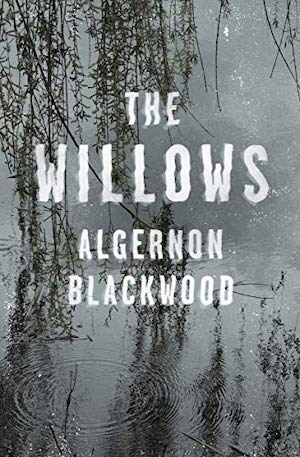
Algernon Blackwood’s 1907 novella “The Willows” takes what should have been a pleasant canoe trip down the Danube and turns it into the holiday from hell. Two friends are boating down the river when a storm blows in and traps them on a small island. They’re surrounded by willow trees, which not only seem to have minds of their own, but don’t even seem to be of this world. Rather than blood, guts, and gore, Blackwood focuses on atmosphere, mounting tension, and terror. The classic story served as the inspiration for T. Kingfisher’s The Hollow Places, bringing readers back under the spell of Blackwood’s haunting willows while putting her own uniquely terrifying stamp on the tale.
***
The stories above are some of my favorite examples, but hardly an exhaustive list—feel free to drop your own recommendations for plant fiction of the strange and/or scary variety below!
Lorna Wallace has a PhD in English Literature and is a lover of all things science fiction and horror. She lives in Scotland with her rescue greyhound, Misty.










